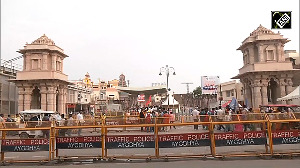Even as North Korea boasts of successfully conducting its maiden nuclear test, geologists have expressed doubts over whether a nuclear bomb was really detonated.
They said the blast seemed too small for a nuclear explosion, although they do not dispute that a seismic activity was not detected on the Richter scale. Scientists said the seismic rumble detected near Kimchaek was certainly due to a blast, as the seismic signal of an explosion has a much sharper start than a quake. But to identify whether the seismic signal was due to a nuclear blast would take more time, reports Nature.
For determining that, the geology of the rock would need to be considered, they said adding that the radionuclide analysis of particles leaked into the atmosphere by the blast could also give evidence of a nuclear explosion.
On Monday morning, North Korea announced it had performed an underground test of a nuclear bomb, apparently warning China about 20 minutes beforehand. The South Korean Institute of Geoscience and Mineral Resources reported that at 10:35:27 am, local time on October 9, 2006, a seismic tremor measuring 3.58 to 3.7 on the Richter scale was detected.
The US Geological Survey later announced that they recorded seismic activity rating at 4.2 on the Richter scale. Researchers said going by the intensity of the blast as indicated by the seismic signal, it might be possible that the bomb did not completely detonate.
They said North Korea has been under suspicion for having a uranium enrichment programme, and is estimated to have between seven to 24 kilograms of plutonium, which depending on how much is needed for a bomb (four to eight kilograms) could produce only just enough for one bomb or up to four.
To create a blast this size without a nuclear reaction, a huge amount of TNT will be needed -- and a very large underground hole will have to be excavated, which will be easily spotted by spy cameras, they said.





 © 2025
© 2025